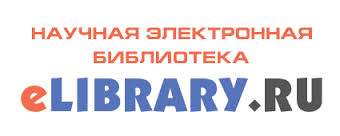METHODOLOGY OF CREATING AND USAGE OF AN ELECTRONIC STUDENT’S BOOK FOR LITERATURE CLASSES: AN APPROACH TO THE PROBLEM
Abstract
DOI 10.18522/1995-0640-2024-3-174-187
This article deals with the actuality of creation and usage of an electronic student’s book for literature classes in the modern school education. It gives a definition of the student’s book and the list of its main characteristics. The author of the article describes the worked-out model of the SB on the example of learning a poem by M.Yu. Lermontov “The song about the tsar Ivan Vasilievich, a young oprichnik and a dashing merchant Kalashnikov” in the 7th grade. This article includes lesson plans using this electronic student’s book in the 7th grade. There is also an analysis of material comprehension by school children while studying a work of fiction literature. The author has made a conclusion on its efectiveness, that usage of the electronic student’s book for literature in the 7th grade has helped to raise the student’s interest with the help of interactive way of giving the information. Their knowledge has been tested with the exercises from this e-book, students are more involved in the process when they get an assignment in an interactive than in a traditional way.
Key words: e-book, methodology of teaching literature, information-communication technologies, digitization, teaching process, literature lesson
Downloads
Published
How to Cite
Issue
Section
License
Copyright (c) 2024 Arsenii S. Turkevich

This work is licensed under a Creative Commons Attribution-NonCommercial 4.0 International License.
Authors who publish with this journal agree to the following terms:
- Authors retain copyright and grant the journal right of first publication with the work simultaneously licensed under a Creative Commons Attribution License that allows others to share the work with an acknowledgement of the work's authorship and initial publication in this journal.
- Authors are able to enter into separate, additional contractual arrangements for the non-exclusive distribution of the journal's published version of the work (e.g., post it to an institutional repository or publish it in a book), with an acknowledgement of its initial publication in this journal.
- Authors are permitted and encouraged to post their work online (e.g., in institutional repositories or on their website) prior to and during the submission process, as it can lead to productive exchanges, as well as earlier and greater citation of published work (See The Effect of Open Access).


















